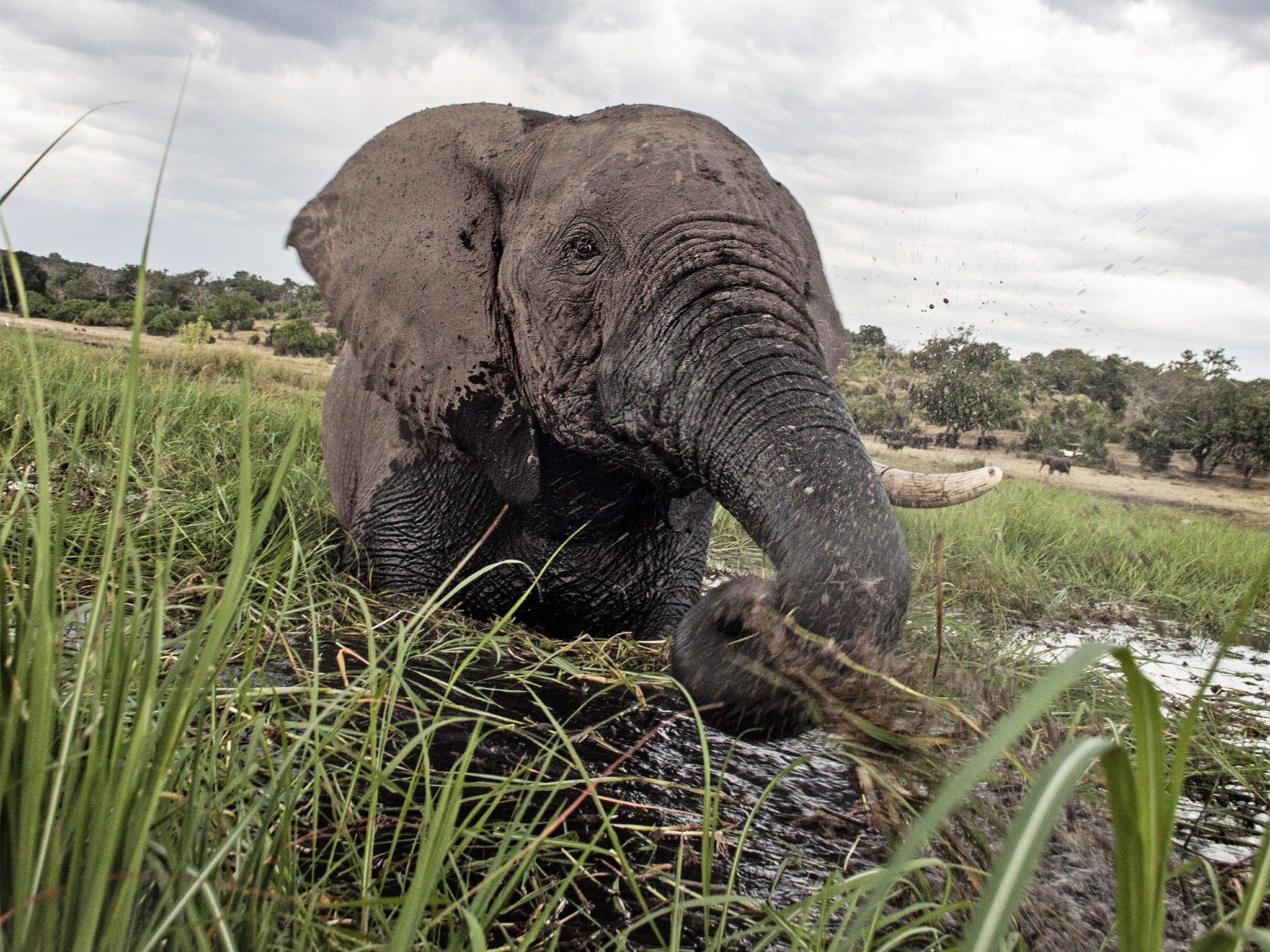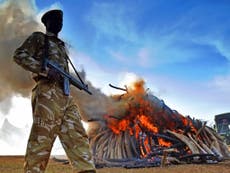Giants Club: Uganda's elephants back from the brink
These noble and intelligent animals deserve much better than dying for someone else’s vanity

Gawking is not considered impolite in Uganda. For a first time visitor, in fact, it is entirely expected, because there is much to gawk at.
There is something about this country which hugs the shores of Lake Victoria in East Africa that simply overwhelms your sense of discovery and beauty.
Thunderstorms can roll in suddenly and just as suddenly the sun bursts out with a vengeance to lift dampened spirits. The people aren’t that bad either. The friendly smile is frequently taken to new levels of art form in the countryside.
Winston Churchill called Uganda, ‘The Pearl of Africa’. Perhaps even this was an understatement. He probably did not have a chance to see the Mountain Gorilla on a misty morning in Bwindi forest.
“The feeling of serenity can be intoxicating,” says Mr. Stephen Asiimwe, the Chief Executive Officer of the Uganda Tourism Board. “It is not just the various hues of green that cover much of the 240,000 square kilometers or the undulating hills that sometimes never end. Or lakes that seem to be floating in the clouds and mountain tops that crackle to the sound of snow underfoot.
“It is simply the fact of being alive in a land gifted by nature. So much so, that the varieties of birds found in Uganda are among the largest seen anywhere in the world. Not surprising considering the swathe of protective tropical forests that not only project mystery and menace, but also a cacophony of happy sounds.”
Although nature has been good to Uganda, humankind has at times been far less so. At one point, Uganda was going to lose two of the famous ‘Big Five’ wildlife animals.
Not long ago, interludes of despair and ruin caused the demise of both innocent people and the formerly teeming wildlife, especially the elephant and rhino herds.
At the end of the 1960s, Uganda could count on an estimated more than 30,000 elephants roaming its wide plains. By 1983, that number had been decimated. Latest figures put the number today at back up to at least 5,500.
The problems of wildlife management were worsened by civil strife between 1970 and 2000. In the latter years, Joseph Kony and his rebels in the Lord’s Resistance Army were a constant menace in northern Uganda.
The 1979 war that toppled Idi Amin left most of the protected areas devoid of wildlife as most animals were literally mauled down for selfish reasons or just mere amusement. Not unusual when you have thousands of gun-toting men who have time on their hands and plenty of ammunition.
Today, Uganda is home to one of the fastest growing elephant populations on the continent. It is a slow process of recovery, but positive results can be seen in such places as Queen Elizabeth National Park to the west and Murchison Falls National park in North West.
On the other hand, poaching remains a constant threat. It is often forgotten, not least by Africans themselves, that the African elephant is the largest living land mammal. To come across the bloody remains of an elephant killed for its tusks can be traumatic for Uganda Wildlife Authority (UWA) rangers. It causes the bile to rise in anger and disgust, but there is little time to moan if they are to save the next elephant.
In around 2010 the poaching of elephants intensified, mainly from the savannah areas, due to the high prices offered for ivory in some East Asian markets.
Unfortunately during this interlude, the UWA was also undergoing its own serious challenges that compromised its capacity to control the situation. Funding was limited and staff morale was down.
The situation was not helped by the porous boundaries of protected areas, poverty within the surrounding communities and the unscrupulous agents of ivory buyers always lurking about.
Strong political leadership has changed all that. In recent years, the government has funneled more resources towards wildlife conservation and particularly saving the elephant from more slaughter.
Some of the high points include recruitment of new UWA park rangers. Some of these have been commissioned by President Yoweri Museveni as a reflection of his own support for this effort.
Budget allocations have been increased and an inter-ministry task force is in place to improve wildlife protection and management. Some UWA staff are involved in the communities surrounding national parks to help flush out and break up poaching rings. They also have the job of educating civic leaders about the importance of wildlife conservation.
‘From 2010, the poaching statistics indicate that the poaching trends have started changing positively. The number of elephants now lost in our protected areas is going down and the rate of encounter of incidences also reduced. It is also important to note that the rate of confiscation of wildlife trophies, specifically ivory on transit has improved with most of it through the airport,’ says Asiimwe.
Yet the lure of quick money can be difficult to ignore amidst high poverty levels. Consequently, more public awareness remains a key component of saving the elephant.
This is a war that is not going to be won anytime soon. That means no help is too little give.
These noble and intelligent animals deserve much better than dying for someone else’s vanity. Yet the irony is somewhere on this globe someone has made a discerning choice to buy piece of ivory.
Mulinde Musoke is Editor of the East African Business Week newspaper.
- For more about the Giants Club: independent.co.uk/voices/campaigns/giantsclub
- To donate to Space for Giants: spaceforgiants.org
- Corporate donors looking to partner the Giants Club should contact: giantsclub@spaceforgiants.org



Join our commenting forum
Join thought-provoking conversations, follow other Independent readers and see their replies